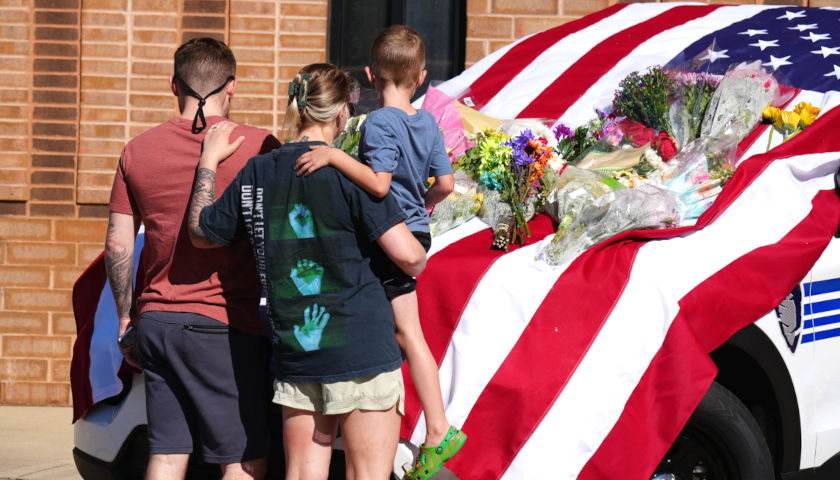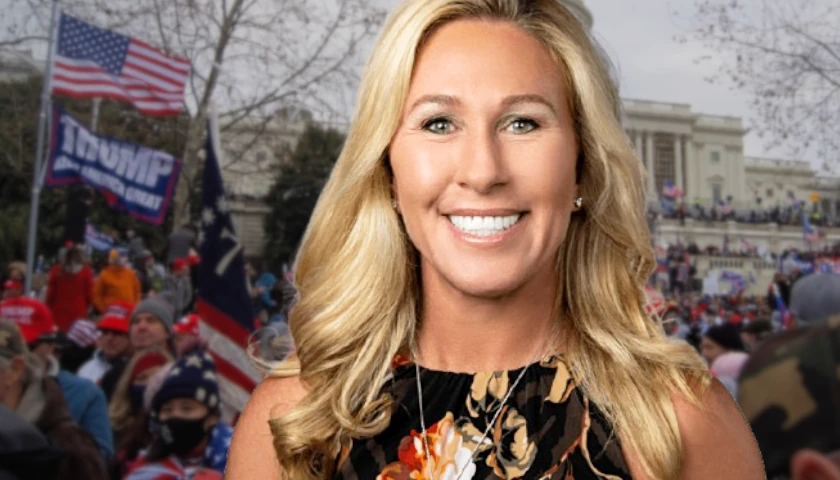by Jack Cashill
Four law enforcement officers were shot dead in Charlotte, North Carolina, last week. On hearing the news, I was reminded of my mother’s frequent warnings about police work. Her message? Steer clear. With her husband and her brother patrolling the mean streets of Newark, she didn’t need the added anxiety of having her sons do the same. Today, for the children and spouses of police officers, that anxiety must be unbearable — and not just because of the obvious danger.
You may not have heard of the Charlotte shooting. It vanished from the national news in a flash. Despite the magnitude of the offense, within two or three days the national media had dropped the story cold.
The demographics of the case dictated its disappearance.
The New York Times article, “What We Know About the Shooting in Charlotte,” established the template. Although this was “one of the deadliest recent attacks on law enforcement in the United States,” the Times felt no obligation to mention the race — or show photos — of the officers or the perp. For the record, Terry Clark Hughes Jr. was black and the four dead officers white. If you read this publication, you likely surmised that. The media algorithms have become that obvious.
After the shootout, North Carolina Gov. Roy Cooper told the Times what the media selectively forgets: “Dangerous assignments are part of the job, but [the police] step up and do it anyway to protect our communities and protect our families.” Danger has always been part of the job. For some young people, it makes the job attractive. If potential recruits steer clear of urban police departments — almost all are perilously understaffed — it is not the fear of bad guys that dissuades them. It is the fear of the algorithms.
Having served on the Kansas City Police Department (KCPD) in a different era, Master Detective Albert DeValkenaere did not discourage his son Eric from following in his footsteps. For 20 years, Detective Eric DeValkenaere did his job efficiently and honorably while raising a loving family on his modest salary. His virtues, however, offered no protection against the algorithms. The headlines spell out his fate:
- “Former police officer sentenced to 6 years for killing a Black man while responding to a 2019 traffic incident,” CNN, March 5, 2022.
- “Missouri appeals court upholds conviction of white KC cop in killing of Black man,” Kansas City Star, Oct. 17, 2023.
- “Former Missouri officer who fatally shot a Black man plans another appeal and asks for bond,” Associated Press, Oct. 18, 2023.
- “Former Kansas City Police officer convicted of killing Black man asks for the governor’s pardon,” KCUR, Oct. 24, 2023.
The “black man” who died at the hands of DeValkenaere had the same last name — “Lamb” — as the ironically named black “victim” in Tom Wolfe’s 1987 novel Bonfire of the Vanities. What Wolfe wrote as satire has become media boilerplate.
Today, almost every urban area has a DeValkenaere or two, a white police officer presumed guilty of “killing a black man,” a grave offense found in no criminal code but applied as though it were. These media dramas inevitably feature black men as innocents — honor students, gentle giants, little boys with Skittles — and whites, ideally police officers, as evil. Kansas City’s Cameron Lamb, the media told us, was the loving father of three boys.
What makes this case noteworthy is that DeValkenaere has a Republican attorney general, Andrew Bailey, willing to fight for him. In the respondent’s brief Bailey prepared for the Missouri Court of Appeals, Western District, Bailey described in detail how the algorithms played out for DeValkenaere that December day in 2019.
Lamb, 26, began his final day by striking his live-in girlfriend Shanice Reed and throwing her belongings onto the sidewalk. The pair continued to argue outside. When Reed fled in her purple Mustang, Lamb chased her in his red pickup truck. The vehicles flew past KCPD officer Adam Hill on residential streets at speeds up to 90 miles per hour. Hill thought there was a “rolling disaster going down the streets” and requested a police helicopter to follow the vehicles.
At some point, Lamb gave up the chase and headed home. Still angry, he was driving in excess of 60 and blowing through red lights. The call went out to detectives DeValkenaere and Troy Schwalm in separate cars. Independently both concluded, in Schwalm’s words, “there was something more to it versus just driving fast.”
The helicopter officer directed Schwalm and DeValkenaere to the back of a house where Lamb seemed to be stashing his truck. “[B]e careful,” he told them. “I last saw him in the area underneath the trees behind the house.”
Schwalm took the lead. After parking in front of the house, Schwalm walked down a shared driveway toward the backyard, gun in the “low ready” position. DeValkenaere walked up the cluttered far side of the house to provide backup.
When Schwalm approached, Lamb was trying to back the truck into a garage beneath the house, an uneasy fit. Schwalm told him to put the truck in park. Lamb refused to comply. Walking into a situation “nature unknown,” DeValkenaere advanced around the far side of the house, gun at low ready.
Looking down at the truck from a retaining wall, he saw Lamb reach for a gun beneath his seat. He shouted, “[H]e’s got a gun, he’s got a gun,” but refrained from shooting until Lamb brought the gun “up and around the left-hand side of the steering wheel.”
“I can’t let this happen,” DeValkenaere reflected — the “this” meaning the shooting of his partner. DeValkenaere fired a shot into the center mass of Lamb’s body, retreated briefly around the corner of the house, and fired three more rounds in Lamb’s direction. As DeValkenaere testified, he would not have shot the driver “had he not pointed that gun at my partner.” Schwalm did not have a clear line of sight into the truck.
After the shooting, DeValkenaere did not touch Lamb or his gun. Several other KCPD officers arrived soon after the shooting — two within 30 seconds — and took over the scene. At least four other officers would testify they saw the gun on the ground below Lamb’s dangling left arm. One used his foot to pin the gun to the ground in case Lamb was still alive. Crime scene investigators verified the presence of the gun. Later, the medical examiner found two live rounds in Lamb’s pocket.
None of this mattered to Jackson County, Missouri, Prosecutor Jean Peters Baker. Although not an official Soros plant, she might as well be. Appointed prosecutor in 2011, Baker was elected twice thereafter in this heavily Democratic county. Baker’s official profile boasts of her “being unafraid of tackling difficult cases.” She seems particularly proud of those cases in which she and her colleagues “convicted a series of police officers accused of wrongly using excessive or deadly force on citizens.”
DeValkenaere was one of those officers, a trophy on Baker’s mantle. Charged with “involuntary manslaughter in the first degree and armed criminal action,” he went to trial in November 2021, six months after Derek Chauvin’s trial in Minneapolis. Fearing a jury as frightened as Chauvin’s, DeValkenaere and his team opted for a bench trial. Circuit court Judge J. Dale Youngs presided.
Baker’s prosecutors made the outrageous claim that DeValkenaere or another cop must have planted the gun, but Youngs made no reference to this in his ruling. In fact, he found DeValkenaere’s testimony and that of the officers “very credible.” He conceded, too, that DeValkenaere had gone to the back of the house “to provide cover for Sergeant Schwalm who had rushed into the backyard with his weapon drawn.”
In sentencing DeValkenaere, Youngs applied the Chauvin standard. Lest the “community” think him too lenient, he explained that “Eric Devalkenaere is not Derek Chauvin who murdered George Floyd.” As I’ve argued in these pages and at length, Chauvin did not “murder” George Floyd. Like DeValkenaere, he was guilty of policing while white.
For Youngs, the “one issue of law that … countermanded every other factual issue in the case” was whether Schwalm and DeValkenaere were “lawfully present on the premises when they engaged Cameron Lamb.” After reflecting on the nuances of the Fourth Amendment, Youngs found DeValkenaere guilty of involuntary manslaughter in the second degree and armed criminal action and sentenced him to six years in prison. That simple. The community approved.
Attorney General Bailey was stunned. He argued that Lamb had no right under any circumstances to point a gun at the officers. “In short,” Bailey contended, “even if he trespassed or committed a constitutional violation by unlawfully entering the curtilage, DeValkenaere did not act with criminal negligence in shooting Mr. Lamb. To the contrary, DeValkenaere lawfully used force to defend Schwalm from Mr. Lamb’s use of unlawful, deadly force.”
Curiously, a year after the trial, Baker seemed to agree that a person has a right to defend an endangered partner. Said Baker’s office, “Missouri law governs this case, specifically self-defense and defense of others, leading us to decline charges after a careful review.” The woman they declined to charge had killed a Kansas City fireman.
The fireman had intervened to stop her beau from harassing a female clerk at a convenience store. Angry, the young man rushed to his car to retrieve a handgun illegally converted to fully automatic. In the parking lot, the two men struggled over the gun. The fireman got the best of the struggle and had the young man subdued when he managed to hand the gun off to his girlfriend. She promptly shot the fireman in the back, killing him. Needless to say, the woman and her beau were black, the fireman white. The algorithms giveth, and they taketh away.
Devalkenaere’s father, Albert, understood the political calculus. In a heartfelt missive, he shared several facts of his son’s case that the media chose not to. Lamb, it appears, had good reason to flee. Both the gun and the truck were stolen, and he was under the influence of at least two narcotics. He had also beaten his girlfriend that morning and may have suspected the police officerswere aware of that.
What Bailey did not mention in his brief is what the media could not mention enough: The white Devalkenaere shot a “black man.” In Democratic strongholds like Jackson County, that is the algorithm that drives justice and that has been driving would-be officers away from Kansas City.
While the city’s homicides are at a record high — including an embarrassingly visible murder at the Kansas City Chiefs Super Bowl parade — police staffing levels are at a record low, with some 300 spots unfilled. Area mammas have gotten the message: They’re not letting their babies become police officers.
Bailey was making his pitch as much to Missouri’s Republican governor, Mike Parson, as he was to the appeals court, which, for procedural reasons, refused to reverse the ruling by Youngs. The lame duck Parson represents Devalkenaere’s last hope. God willing he will find the stones to ignore the mobs and the media and do the right thing.
– – –
Jack Cashill has written a dozen books under his own name and collaborated on a dozen more. He has a Ph.D. from Purdue University in American studies.
Photo “Police Memorial Service” by CMPD News.








